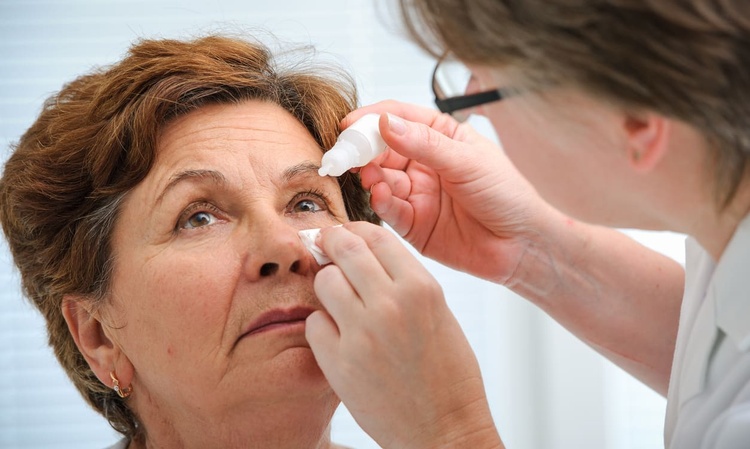Macular Degeneration Explained: Symptoms, Care & Prevention
Macular degeneration, especially age-related macular degeneration (AMD), affects central vision and can make tasks like reading, driving, and recognizing faces difficult. Learn how eye doctors diagnose AMD, what treatments (including anti-VEGF injections) can slow progression, lifestyle steps to protect sight, and typical cost considerations. Early detection and adherence to care plans improve outcomes—discover essential tips and facts to help preserve vision.

Macular degeneration is a progressive eye disorder that damages the macula, the small central portion of the retina responsible for sharp, central vision. Most commonly seen in people over 50, age-related macular degeneration (AMD) can gradually reduce the ability to read, drive, and see facial details. Although there’s no guaranteed cure, early detection and appropriate management can slow progression and help preserve functional vision.
How do eye doctors diagnose macular degeneration?
Detecting macular degeneration usually begins with a comprehensive eye exam. Eye care professionals use a combination of tests to identify changes in the macula and track disease activity:
- Visual acuity testing: Measures clarity of vision at various distances to spot central vision loss.
- Dilated eye examination: Drops widen the pupil so the doctor can inspect the retina and macula for drusen (yellow deposits), pigment changes, or bleeding.
- Amsler grid testing: A simple grid patients use at home or in clinic to detect distortions or blind spots in central vision; changes often indicate macular problems.
- Optical coherence tomography (OCT): A noninvasive imaging scan that produces cross-sectional images of the retina, revealing fluid, thickness changes, and structural damage.
- Fluorescein angiography: A dye is injected into the arm and photographed as it circulates through retinal vessels to identify leaking or abnormal blood vessels, especially useful for diagnosing the ‘wet’ form of AMD.
Regular eye exams are essential because early stages of AMD can be asymptomatic. Timely diagnosis allows for monitoring and earlier intervention when necessary.
What treatments involve eye injections?
For the neovascular or “wet” form of AMD—characterized by abnormal blood vessel growth and leakage—anti-VEGF (vascular endothelial growth factor) therapy delivered by intraocular injections is the standard of care. These medications reduce abnormal vessel growth and can stabilize or improve vision for many patients.
Common anti-VEGF drugs include:
- Lucentis (ranibizumab)
- Eylea (aflibercept)
- Avastin (bevacizumab) — often used off-label and less expensive
Treatment is typically administered by an ophthalmologist in a clinic setting. The eye is numbed with local anesthetic drops, and the injection is given directly into the vitreous cavity. Although the idea of an injection into the eye can be intimidating, most patients tolerate the procedure well and recover quickly. Initial regimens often require monthly or bi-monthly injections, with intervals adjusted based on disease activity seen on OCT and clinical exam.
Potential side effects include temporary discomfort, redness, or increased eye pressure. Rarely, infections or retinal detachment can occur; these risks are minimized by using sterile technique and experienced clinicians.
How can you preserve your vision with macular degeneration?
Several steps can help slow progression and preserve remaining vision:
- Regular monitoring: Keep scheduled visits and report sudden changes such as new blurriness, straight lines appearing wavy, or dark spots.
- Follow the treatment plan: Adhere to injection schedules or other recommended therapies and follow-up imaging.
- Nutritional support: A diet rich in leafy greens, colorful vegetables, fish, and foods high in antioxidants supports retinal health.
- AREDS2 supplements: For patients with intermediate or advanced dry AMD in one eye, the AREDS2 formulation may slow progression. Only take supplements when advised by your eye care professional.
- Sun protection: Wear sunglasses that block UV rays and wide-brimmed hats outdoors to reduce cumulative light exposure.
- Stop smoking: Smoking is a significant risk factor for AMD progression—quitting lowers risk.
- General health: Regular exercise, blood pressure control, and management of cardiovascular risk factors can contribute to better eye health.
- Low vision support: If central vision is reduced, vision rehabilitation, magnifiers, and adaptive devices can help maintain independence and quality of life.
What are the cost considerations for treatment?
Treatment expenses vary depending on medication choices, frequency of injections, imaging tests, and geographic location. Below is a general overview of typical costs associated with common services and therapies.
| Treatment Type | Average Cost per Session | Typical Frequency |
|---|---|---|
| Anti-VEGF Injection | $1,500 - $2,500 | Monthly/Bi-monthly |
| Comprehensive Eye Exam | $200 - $400 | Every 6-12 months |
| OCT Imaging | $250 - $500 | As needed |
| AREDS2 Supplements | $20 - $60 | Monthly |
Prices, rates, or cost estimates mentioned in this article are based on the latest available information but may change over time. Independent research is advised before making financial decisions.
Managing macular degeneration is a multifaceted process that combines timely medical intervention, lifestyle adjustments, and regular monitoring. While dry AMD progresses slowly in many people, wet AMD can lead to rapid vision changes that require prompt treatment to preserve sight. Staying informed, attending scheduled eye appointments, and working closely with an eye care team will give the best chance of maintaining vision and quality of life.
This article is for informational purposes only and should not be considered medical advice. Please consult a qualified healthcare professional for personalized guidance and treatment.






